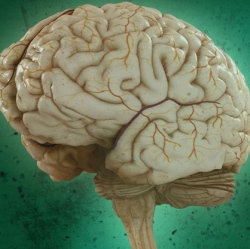
Particles of pollution have been discovered inside samples of brain tissue, according to new research. Suspected of toxicity, the particles of iron oxide could conceivably contribute to diseases like Alzheimer’s, though evidence is lacking. The finding – described as "dreadfully shocking" by researchers, raises new questions about the health risks of air pollution.
Many studies have focused on the impact of dirty air on the lungs and heart. Now this new research provides the first evidence that minute particles of what is called magnetite, which can be derived from pollution, can find their way into the brain.
Earlier this year the World Health Organisation warned that air pollution was leading to as many as three million premature deaths every year.
The estimate for the UK is that 50,000 people die every year with conditions linked to polluted air. The research was led by scientists at Lancaster University and is published in the Proceedings of the National Academy of Sciences (PNAS).
The team analysed samples of brain tissue from 37 people – 29 who had lived and died in Mexico City, a notorious pollution hotspot, and who were aged from 3 to 85. The other 8 came from Manchester, were aged 62-92 and some had died with varying severities of neurodegenerative disease.
The lead author of the research paper, Prof Barbara Maher, has previously identified magnetite particles in samples of air gathered beside a busy road in Lancaster and outside a power station.
She suspected that similar particles may be found in the brain samples, and that is what happened.
"It’s dreadfully shocking. When you study the tissue you see the particles distributed between the cells and when you do a magnetic extraction there are millions of particles, millions in a single gram of brain tissue – that’s a million opportunities to do damage."
